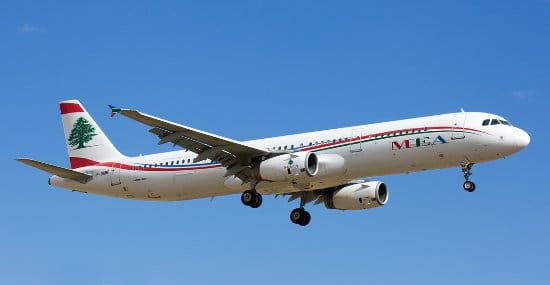The airlines of the Middle East are recognized globally for their top-tier services, luxury, and innovation. Whether you’re flying for business or leisure, these airlines provide a world-class travel experience, connecting the region to the rest of the world with style and comfort. From the plush cabins of Emirates and Qatar Airways to the traditional hospitality of Oman Air and Royal Jordanian, the Middle East’s airlines cater to every type of traveler, ensuring a memorable journey.
The Middle East, a region steeped in history, culture, and natural beauty, offers travelers a blend of ancient traditions and modern marvels. From the towering sand dunes of the Arabian Desert to the bustling souks of Marrakech and the historical treasures of Petra, the Middle East has something to captivate every kind of traveler. If you’re thinking about embarking on a journey through this fascinating region, here’s a guide to help you explore the best of what the Middle East has to offer.
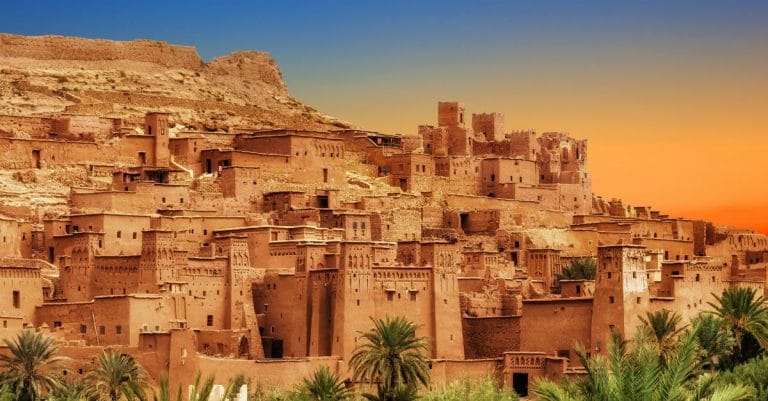
1. Ancient History & Cultural Treasures
One of the main draws of the Middle East is its rich history, with civilizations that date back thousands of years. Here are some must-visit historical sites:
Petra, Jordan: This iconic archaeological site is one of the New Seven Wonders of the World. Carved into the rose-red cliffs, Petra’s grandeur will leave you in awe. As you walk through the narrow Siq, the Treasury suddenly appears before your eyes, a sight that feels straight out of a movie.
Pyramids of Giza, Egypt: The Great Pyramid of Giza is the last standing of the Seven Wonders of the Ancient World. Visiting these magnificent structures, along with the nearby Sphinx, offers a glimpse into the grandeur of ancient Egypt.
Persepolis, Iran: Once the ceremonial capital of the Persian Empire, Persepolis is a testament to Iran’s rich historical legacy. The ruins, with their grand columns and intricate reliefs, tell stories of a bygone era of empire and conquest.
Jerusalem, Israel/Palestine: A spiritual epicenter for the world’s three major monotheistic religions—Christianity, Islam, and Judaism—Jerusalem is a city where history, faith, and culture converge. Explore the ancient Old City, home to sites like the Western Wall, the Al-Aqsa Mosque, and the Church of the Holy Sepulchre.

2. Vibrant Cities & Modern Wonders
While the Middle East is renowned for its ancient sites, many cities showcase a unique blend of tradition and modernity.
Dubai, UAE: This city is synonymous with luxury and futuristic architecture. Marvel at the towering Burj Khalifa, shop in sprawling malls, or relax at lavish resorts on artificial islands. But beyond its glitz and glamour, Dubai still holds onto its Bedouin roots, and you can explore its rich culture through desert safaris or visits to traditional markets.
Doha, Qatar: With the upcoming spotlight from events like the FIFA World Cup, Doha has emerged as a destination for modern art, culture, and innovation. The Museum of Islamic Art, designed by I.M. Pei, is a must-visit, showcasing Islamic art spanning 1,400 years.
Beirut, Lebanon: Often called the “Paris of the Middle East,” Beirut is a city of contrasts. Its vibrant nightlife, thriving art scene, and fantastic culinary offerings stand against a backdrop of historical sites and beautiful Mediterranean beaches.

3. Natural Landscapes & Outdoor Adventures
The Middle East isn’t just about history and modern cities; it’s also home to some of the world’s most stunning natural landscapes.
Wadi Rum, Jordan: Known as the Valley of the Moon, this desert wilderness offers a surreal landscape of sandstone mountains, ancient rock inscriptions, and vast, open spaces. Whether you’re camping under the stars or exploring on camelback, Wadi Rum is an unforgettable adventure.
The Dead Sea: Bordering Jordan and Israel, the Dead Sea is famous for its extremely salty water, allowing visitors to effortlessly float on its surface. The mineral-rich mud is also known for its therapeutic properties, offering a unique spa-like experience in nature.
The Empty Quarter (Rub’ al Khali), Saudi Arabia/Oman/UAE: The largest continuous sand desert in the world, the Empty Quarter is an otherworldly expanse of rolling dunes. A trip here is a journey into the heart of the Arabian Desert, perfect for off-road adventures or simply experiencing the vast, untouched beauty of nature.
Hajar Mountains, Oman: If you’re into hiking, Oman’s rugged Hajar Mountains offer a stunning backdrop with dramatic canyons, terraced villages, and ancient forts. The Jebel Shams trek, known as the Grand Canyon of Oman, is particularly popular for outdoor enthusiasts.
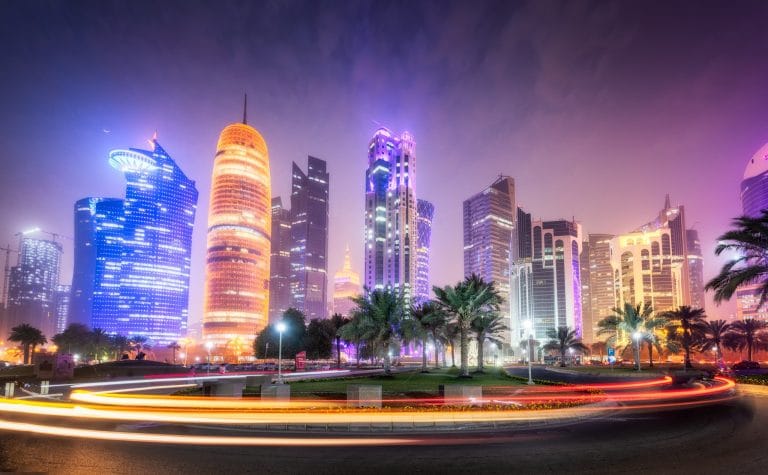
4. Culinary Experiences
Food is an integral part of any travel experience, and the Middle East boasts a rich culinary heritage. Some must-try dishes include:
Shawarma: A popular street food, shawarma consists of seasoned meat (usually lamb, chicken, or beef) slow-cooked on a vertical rotisserie and served in flatbreads with vegetables and sauces.
Hummus & Falafel: Staples of Levantine cuisine, hummus (a chickpea-based dip) and falafel (fried chickpea balls) are commonly served as appetizers or in wraps.
Machboos: A fragrant spiced rice dish with meat, popular in Gulf countries, Machboos is similar to biryani but with a distinct Middle Eastern twist.
Tagine: A North African dish named after the clay pot in which it’s cooked, tagine is a slow-cooked stew of meat (like lamb or chicken) with vegetables, spices, and dried fruits.
Persian Kebabs: Iran is known for its perfectly seasoned kebabs, often served with saffron rice and grilled tomatoes.

5. Travel Tips for the Middle East
Respect Local Customs: While many parts of the Middle East are relatively liberal, it’s important to respect local traditions and dress modestly, especially when visiting religious sites.
Weather Considerations: The Middle East can get extremely hot, especially in the summer months. Plan your trips to outdoor locations like deserts and historical sites in the early morning or late afternoon to avoid the intense heat.
Visas & Travel Documents: Visa requirements vary from country to country, so make sure to check in advance. Some nations offer visa-on-arrival or e-visas for tourists.
Final Thoughts
Traveling through the Middle East is a journey through time and culture. Whether you’re wandering through ancient ruins, marveling at cutting-edge skyscrapers, or floating in the Dead Sea, the region offers an unforgettable mix of experiences. With its warm hospitality, diverse landscapes, and rich traditions, the Middle East beckons those who seek adventure, knowledge, and connection to one of the most historically significant regions on Earth.
The Middle East is home to some of the world’s top airlines, known for their luxurious services, extensive global networks, and exceptional in-flight experiences. These airlines have become synonymous with world-class hospitality and efficiency, connecting passengers from all corners of the globe. Here’s a closer look at some of the most prominent airlines in the Middle East and their profiles:
- Headquarters: Dubai, United Arab Emirates
- Established: 1985
- Hub: Dubai International Airport (DXB)
About:
Emirates is one of the largest and most prestigious airlines in the world. Known for its superior customer service, extensive route network, and luxurious amenities, Emirates offers a premium experience, especially in its First Class and Business Class cabins. Its fleet, which includes the largest number of Airbus A380s, is designed to provide comfort, luxury, and state-of-the-art technology. Emirates flies to over 150 destinations worldwide across six continents, making Dubai a major global aviation hub.
Notable Features:
- Offers a world-renowned First Class with private suites.
- Onboard shower spas available on A380 aircraft.
- Extensive in-flight entertainment system, ICE, with over 4,000 channels.
- Complimentary chauffeur-driven services for Business and First Class passengers.
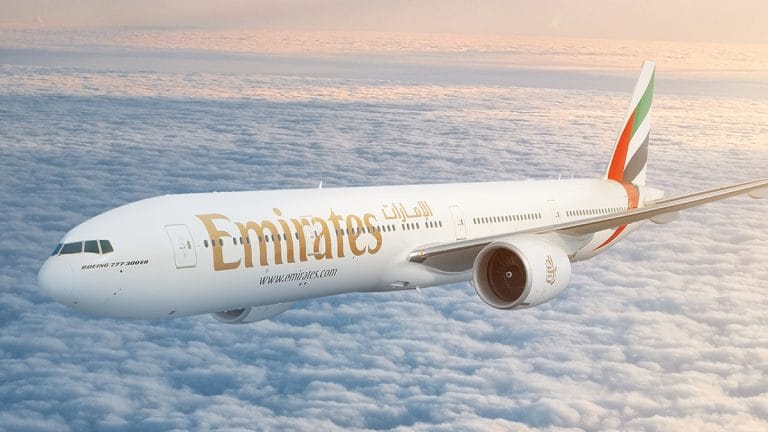
- Headquarters: Doha, Qatar
- Established: 1993
- Hub: Hamad International Airport (DOH)
About:
Qatar Airways has consistently won numerous awards for its exceptional service, including being named “Airline of the Year” by Skytrax multiple times. The airline is part of the Oneworld alliance and flies to over 160 destinations globally. With a strong focus on customer comfort and innovation, Qatar Airways’ Qsuite in Business Class is often considered the best in the industry, offering a “first class” level experience.
Notable Features:
- The exclusive Qsuite in Business Class, offering privacy and flexibility with lie-flat beds and sliding doors.
- A state-of-the-art entertainment system, Oryx One, with thousands of options.
- A wide range of gourmet dining options, including special meals for dietary restrictions.
- Direct flights to key global destinations, especially in Asia, Europe, and North America.
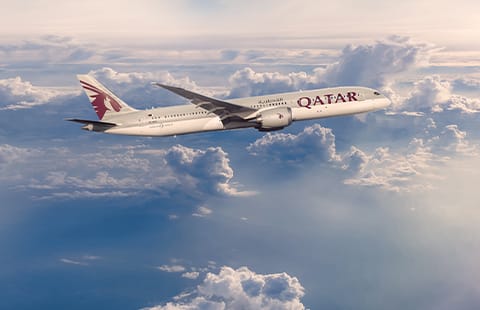
- Headquarters: Abu Dhabi, United Arab Emirates
- Established: 2003
- Hub: Abu Dhabi International Airport (AUH)
About:
Etihad Airways is the national airline of the UAE and is recognized for its high levels of service and luxury. It operates a large fleet and serves around 80 international destinations. Etihad’s “The Residence” suite, available on some of its A380s, is one of the most luxurious flying experiences in the world, offering a three-room suite with a personal butler. The airline has been expanding its codeshare partnerships to increase its global reach.
Notable Features:
- “The Residence,” a private three-room suite on select A380 flights.
- Etihad Guest loyalty program with numerous redemption options.
- Extensive range of inflight entertainment with E-BOX.
- Focus on sustainability and eco-friendly initiatives.

- Headquarters: Jeddah, Saudi Arabia
- Established: 1945
- Hub: King Abdulaziz International Airport (JED), King Khalid International Airport (RUH)
About:
Saudia is the flag carrier of Saudi Arabia and one of the oldest airlines in the region. It operates flights to over 90 destinations in the Middle East, Africa, Europe, Asia, and North America. In recent years, Saudia has undergone a transformation, modernizing its fleet and services. The airline offers a range of options for both business and leisure travelers, and its cabins feature the latest in-flight entertainment and comfort.
Notable Features:
- Exclusive “AlFursan” lounges for premium passengers.
- Modern fleet with a focus on wide-body aircraft like the Boeing 777 and 787 Dreamliner.
- Family-friendly services, including dedicated family seating areas.
- Comprehensive Halal meal options onboard.
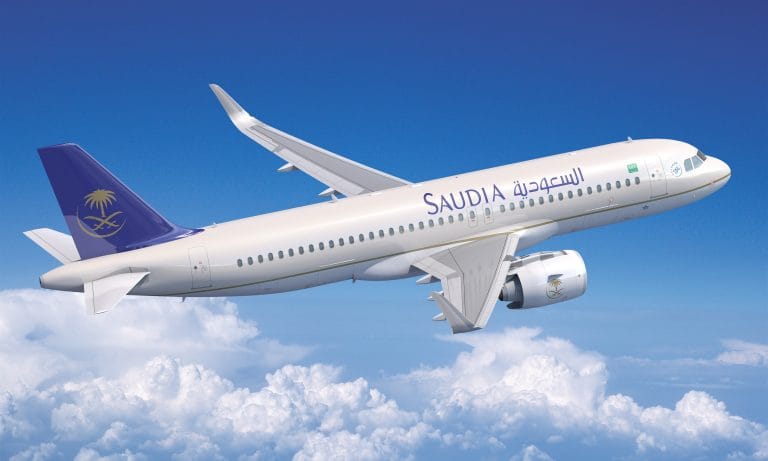
- Headquarters: Muscat, Oman
- Established: 1993
- Hub: Muscat International Airport (MCT)
About:
Oman Air, the national airline of Oman, offers a blend of luxury, comfort, and traditional Omani hospitality. The airline has grown significantly over the years, expanding its route network to include destinations in the Middle East, Europe, Africa, and Asia. Oman Air is known for its commitment to providing premium service, with an emphasis on comfort in both Business and Economy Class.
Notable Features:
- Lie-flat Business Class seats with direct aisle access.
- Award-winning in-flight dining, often featuring Omani specialties.
- Oman Air’s Sindbad loyalty program, with tier benefits.
- A growing fleet with modern Airbus and Boeing aircraft.
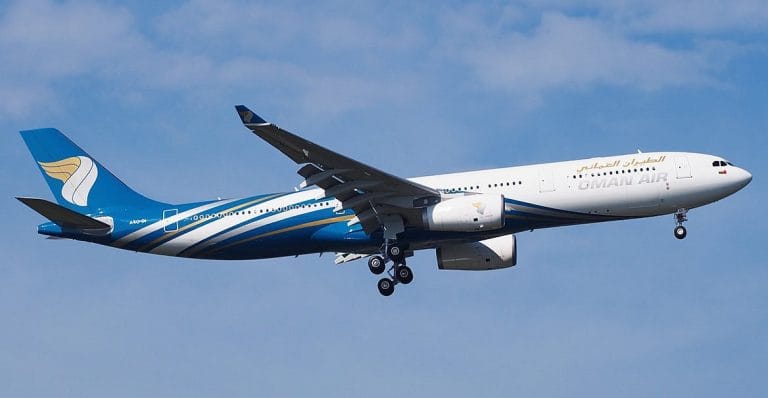
- Headquarters: Amman, Jordan
- Established: 1963
- Hub: Queen Alia International Airport (AMM)
About:
Royal Jordanian is the flag carrier of Jordan and has long been a key player in connecting the Middle East to the rest of the world. It is a member of the Oneworld alliance and offers flights to over 45 destinations in the Middle East, Europe, North America, and Asia. Known for its warm hospitality, Royal Jordanian provides a comfortable flying experience with modern amenities and services.
Notable Features:
- Crown Class (Business Class) offers lie-flat seats on long-haul flights.
- Award-winning in-flight entertainment and Wi-Fi services.
- Exclusive Crown Lounge at Amman’s airport for premium passengers.
- Special focus on connecting passengers to the Levant region.

- Headquarters: Manama, Bahrain
- Established: 1950
- Hub: Bahrain International Airport (BAH)
About:
Gulf Air is one of the oldest airlines in the Middle East and serves as the national carrier of Bahrain. The airline is known for its friendly service and operates flights to over 50 destinations across the Middle East, Europe, Africa, and Asia. Gulf Air has undergone significant modernization, focusing on delivering a boutique-style flying experience with luxurious Business Class amenities.
Notable Features:
- Falcon Gold (Business Class) features flatbed seats and a boutique dining experience.
- Frequent flyer program, FalconFlyer, with a wide range of benefits.
- In-flight Wi-Fi and entertainment on long-haul routes.
- Focus on connecting passengers to destinations within the GCC (Gulf Cooperation Council) region.

- Headquarters: Beirut, Lebanon
- Established: 1945
- Hub: Beirut-Rafic Hariri International Airport (BEY)
About:
Middle East Airlines (MEA) is the flag carrier of Lebanon, offering flights to over 30 destinations in Europe, the Middle East, and Africa. It is a member of the SkyTeam alliance, giving it extended reach through codeshare agreements. MEA is known for providing excellent service, with a modern fleet and a focus on comfort and safety.
Notable Features:
- Cedar Class (Business Class) offers lie-flat seats on long-haul routes.
- Extensive in-flight entertainment system and Wi-Fi.
- MEA Cedar Miles frequent flyer program with benefits across the SkyTeam alliance.
- Known for its punctuality and efficient services.
